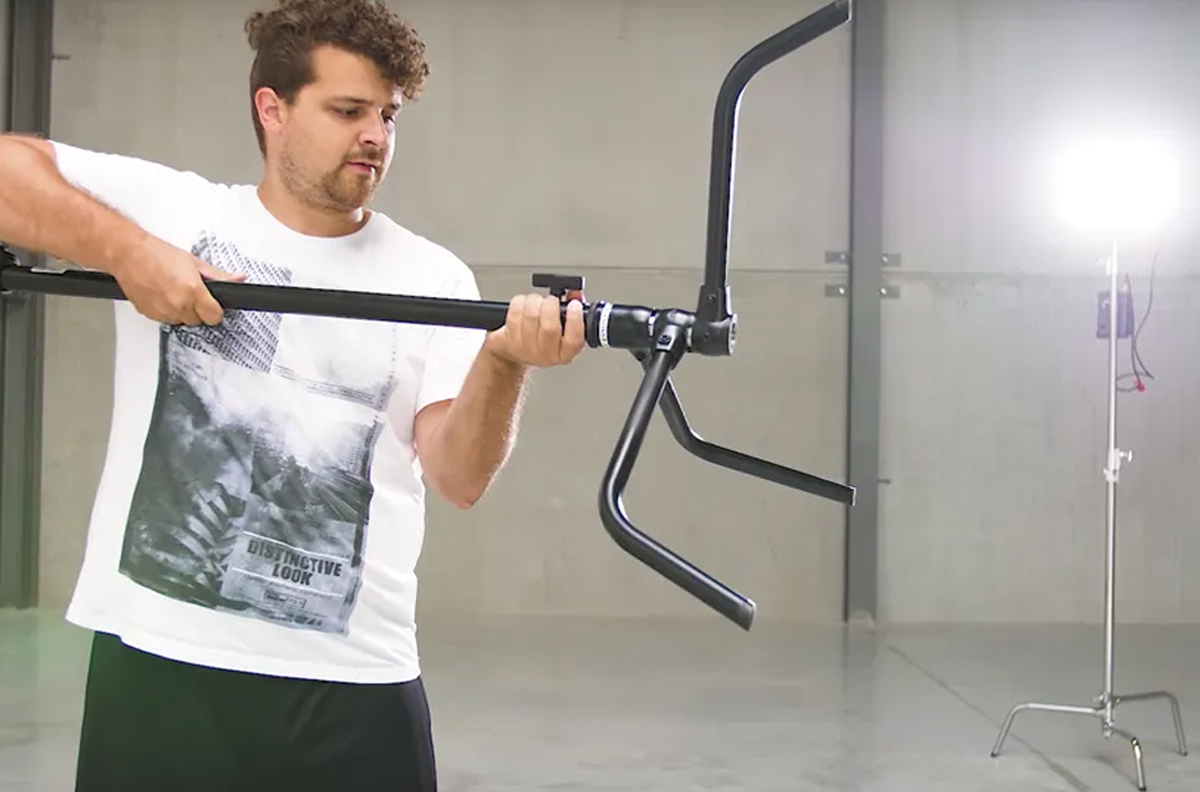In photography and videography, the equipment you choose can significantly impact your work’s quality and efficiency. It is crucial to ensure that the equipment will fit in the designated area by accurately measuring the room and considering the specific dimensions of the stand. Two of the most common types of stands used in studios are light stands and C-stands. Each serves a unique purpose and offers distinct advantages and disadvantages. Understanding the differences between these two can help you decide which one to use for your specific needs..jpg)
What is a Light Stand?
Of the two, the most common, especially in personal studios and among amateur photographers, is the trusty light stand. Light stands are simple in design, allowing for easy folding and transport from one location to another. They are typically made from lightweight materials such as aluminum, making them easy to carry and maneuver. Light stands are readily available in stock, making them accessible for personal studios and amateur photographers.
Light stands are designed to be portable and convenient. They often feature a tripod base that can fold up and compact into a smaller footprint when not in use. However, when fully extended, they have a larger footprint than C-stands, which can clutter up smaller spaces and create tripping hazards.
The weight capacity of light stands is relatively limited compared to C-stands. They are usually sufficient to hold a studio strobe and a medium softbox for a few hours, making them ideal for less demanding setups. Despite their lightweight design, it’s crucial to use sandbags with light stands to ensure stability and prevent expensive equipment from falling and getting damaged.
What is a C-Stand?
A Century Stand, commonly called a C-stand, offers a different design and capabilities. The name "Century Stand" originates from early film production, where these stands held 100-inch (or century) reflectors. C-stands are known for their robustness and are often made from stainless steel, making them much heavier and sturdier than light stands..jpg)
C-stands have a unique leg design, with each leg featuring a bend that reduces its physical footprint. This design saves space, provides better stability, and allows C-stands to hold more weight off-axis. This is particularly useful when mounting heavy lights, large softboxes, or other modifiers that must be positioned at various angles.
Another critical feature of C-stands is their telescoping pole system, which allows for precise height adjustments with tension mounts. This makes them incredibly versatile for various lighting setups and configurations. C-stands often come with grip heads and extension arms, which can hold scrims, flags, reflectors, and other accessories, adding to their functionality.
Advantages of Light Stands
1. Portability: One of the main advantages of light stands is their portability. Their lightweight construction and folding design make them easy to transport and set up, which is ideal for photographers and videographers who frequently move between locations.
2. Affordability: Light stands are generally more affordable than C-stands. This makes them an excellent choice for beginners or those on a tight budget who still need reliable support for their lighting equipment.
3. Ease of Use: Light stands' simple design makes them user-friendly. They typically require minimal setup and adjustment, allowing you to focus more on your shoot than assembling your equipment..jpg)
Disadvantages of Light Stands
1. Limited Weight Capacity: Light stands have a lower weight capacity than C-stands. This can be a limitation when using heavier lights or more significant modifiers, which may require more robust support.
2. Stability Issues: Light stands can be less stable due to their lightweight design, especially in windy conditions or uneven surfaces. Sandbags are essential to prevent tipping over and damaging your equipment.
3. Larger Footprint: Light stands take up more floor space when fully extended, which can be problematic in smaller studios or crowded locations. This can also create a tripping hazard, posing a risk to the equipment and the crew.
Advantages of C-Stands
1. Durability and Stability: C-stands are built to be incredibly durable and stable. The stainless steel construction and unique leg design ensure they can handle heavier loads and provide reliable support in various conditions.
2. Versatility: With their telescoping poles, grip heads, and extension arms, C-stands offer great versatility. They can hold lights and a wide range of accessories, making them a valuable addition to any studio setup.
3. Space Efficiency: C-stands' unique leg design allows for a smaller footprint, making them ideal for confined spaces. This design also makes it easier to position multiple stands close to each other without interference..jpg)
Disadvantages of C-Stands
1. Heavier and Less Portable: C-stands' robust construction makes them significantly heavier than light stands. This can make them less convenient to transport, especially for photographers who frequently work remotely.
2. Higher Cost: C-stands are generally more expensive than light stands. While their durability and versatility justify the cost, it can be a considerable investment, particularly for those just starting in photography or videography.
3. Complexity: The added features and components of C-stands can make them more complex to set up and adjust. This can disadvantage those who prefer a more straightforward, quick setup process.
Conclusion
Both light stands and C-stands play crucial roles in photography and videography, each offering unique benefits suited to different needs. Light stands are ideal for those who prioritize portability, affordability, and ease of use, making them perfect for lightweight setups and frequent location changes. On the other hand, C-stands provide unmatched stability, durability, and versatility, making them the go-to choice for more demanding and professional studio environments.
When choosing between a light stand and a C-stand, consider your specific requirements, the weight and type of equipment you use, and the environments in which you typically work. By understanding the strengths and limitations of each, you can select the stand that best supports your creative vision and workflow.
For a wide selection of light stands and C-stands, check out Samy's Camera, where you'll find high-quality options to suit your studio needs..jpg)






